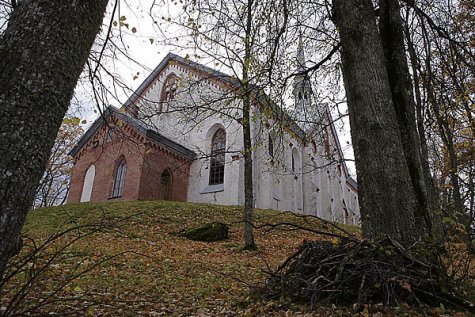Winter hibernation and winter sleep
Photo: Arne Ader
Translation: Liis
A pile of branches in a garden corner suits hedgehogs for nest. Otepää churchyard
Hedgehog Harilik siil Erinaceus europaeus
In order to survive the winter a hedgehog must weigh at least seven to eight hundred grams before going to sleep. This goes for the young of this year, adults weigh up to a maximum of 2 kilos, but in spring only half of the autumn weight remains. As reserve matter the body uses fats of which so called brown fat is stored in muscle tissues for keeping up the body temperature.
Hibernating hedgehogs cannot act and cannot react to disturbances: a winter nest that lets in water means that they get wet and freeze when the weather turns cold. Moreover hibernating hedgehogs cannot protect themselves against attacking other animals. A very great number of young hedgehogs perish in winter during hibernation. Hedgehogs keep company with humans and if you know of a hedgehog’s winter nest in a pile of branches near your home then you might quietly cover the tip of the pile with old plastic sheet, tar paper or something else at hand and fasten it with branches or poles. The entire pile must not be covered: then there will be air shortage in the nest, condensate and mould will form and instead of being helped the winterer may perish.
The oxygen and energy consumption of a hibernating hedgehog are clearly smaller than in summer: body temperature can go down to +6 degrees - that is by more than thirty degrees -, breathing is some twenty times slower than in summer, down to nine times a minute. But the organism produces waste matter and moisture as a result of „burning“ fat, and so the hedgehog must raise its body temperature every seven to ten days, otherwise it cannot get rid of the waste material. Of course the body must have more heating in cold weather in order not to freeze altogether. Quite energy-consuming activities but hedgehogs have learnt to manage through thousands of years.
Our brown bears are settling down to winter sleep. During the sleep the large animals have a body temperature slightly above thirty degrees; of course the needs of oxygen and energy decrease and most waste matter decomposes in the large body. Brown bears often change their position and are actually despite the sleeping state prepared to act when needed or when they are disturbed.
Badgers sleep too in their dens. Raccoon dogs go to sleep only in severe cold but near wildlife feeding places they stumble around even then - we have seen it in the forest and boar cameras.









